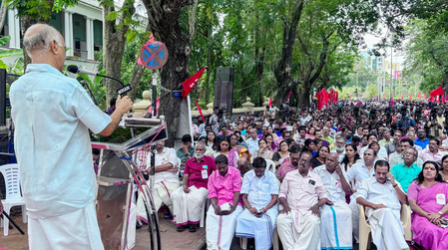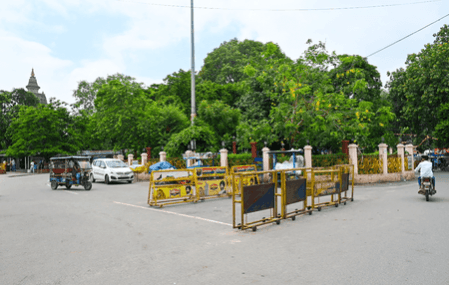
In a significant show of unity, trade unions across India organized a nationwide strike, largely peaceful except in West Bengal and Tamil Nadu. This coordinated action was a response to various grievances, including demands for better wages, improved working conditions, and opposition to certain government policies perceived as detrimental to workers' rights. The strike, which saw participation from millions of workers, underscored the enduring strength and influence of trade unions in the country.
In cities like Delhi, Mumbai, and Bangalore, life continued with minimal interruptions, as public transport and essential services operated largely as usual. This was in stark contrast to the situation in West Bengal and Tamil Nadu, where the strikes were marked by more significant disruptions and confrontations. The peaceful nature of the strikes in most parts of India was a relief to many, given the potential for disruption such large-scale actions can cause.

In West Bengal, the strike saw a more aggressive stance from both the unions and the state government. The ruling party, known for its strong opposition to union-led strikes, deployed a heavy police presence to maintain order. Despite these measures, there were reports of clashes between protesters and law enforcement, leading to several arrests. The state's capital, Kolkata, experienced significant disruptions, with public transport services being hit hard, causing inconvenience to daily commuters.
In Tamil Nadu, the strike was more intense compared to other regions. The state's industrial hubs, which are heavily reliant on labor, saw a noticeable slowdown in operations. Factories and manufacturing units reported lower attendance as workers heeded the call to strike. The state government, while acknowledging the right to protest, urged unions to ensure that the demonstrations remained peaceful and did not disrupt public life.
As the dust settles on the latest round of strikes, both the government and unions will need to reflect on the lessons learned. For the government, this means addressing the legitimate concerns of workers while continuing to pursue economic reforms. For the unions, it means adapting to the changing nature of work and finding new ways to represent and advocate for a diverse and evolving workforce.
Related

















